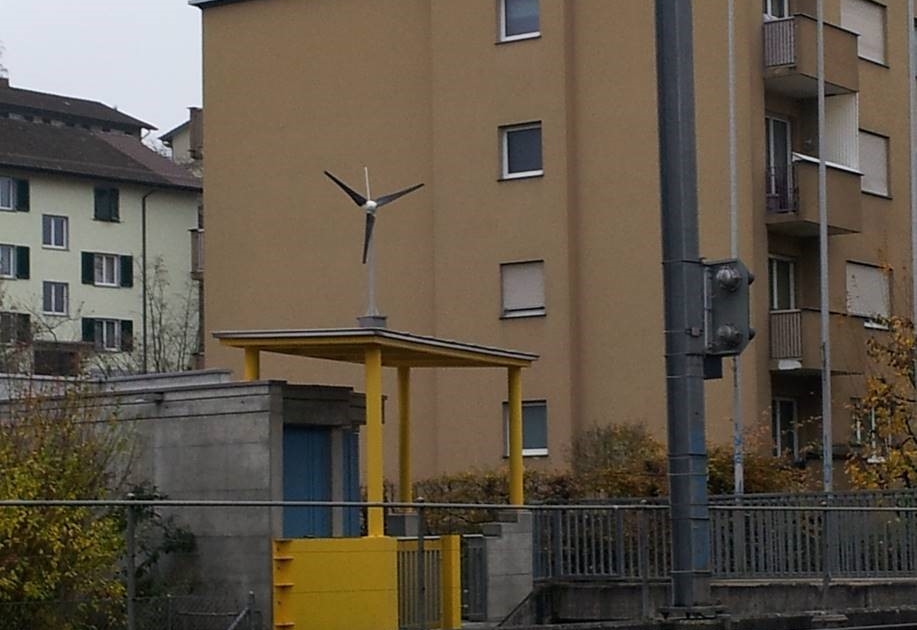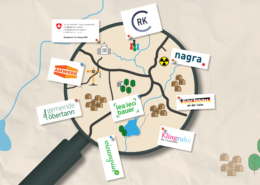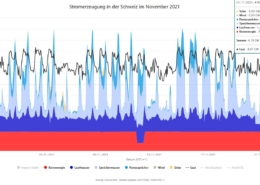When the wind should charge the cell phone
It sounds promising: Set up the camping bus on a lonely beach, set up the mobile wind turbine in no time at all, and you're already supplied with electricity. But even the best wind turbine can't get more energy out of the wind than it has in it. Energeiaplus provides an overview of when small wind turbines make sense and what you can expect from them.
"The answer, my friend, is blowing in the wind." Bob Dylan's song seems to strike a chord. Many people want to achieve their energy autonomy not only with the sun, but increasingly also with small wind turbines.
What do we need to consider here?
Is there enough wind?
The Internet site "windatlas.ch gives a first rough assessment. However, it is difficult to estimate the local wind speeds correctly. The average wind speed is decisive for electricity production. Basically, the closer to the ground, the weaker the wind blows. At 5 to 20 meters above ground, the usual hub height of a small wind turbine, the required average wind speeds therefore rarely prevail.
How much power can you expect?
Manufacturers do provide information on production with their products. However, the question arises whether this electricity production has also been tested by a neutral party. The decisive factor is the yield under normal wind conditions, not under rare strong winds.
The Swiss Federal Office of Energy (SFOE) receives repeated inquiries from citizens on the subject of wind turbines.
A student recently wanted to know how much electricity a large wind turbine produces with one rotation.
The SFOE's answer: A large wind turbine needs about four seconds for one revolution. In this time it produces 3.5 kWh of electricity. This is enough to charge a cell phone for a year or to make a cup of coffee every day for a year.
Small wind turbines only make sense in exceptional cases. In order to make a contribution to the electricity supply in Switzerland, the much more efficient large-scale plants are needed. These produce 2/3 of their electricity in the winter half-year, when the demand for electricity is greatest.
Further details can be found in the wind energy concept published jointly by the SFOE, the Federal Office for the Environment and the Federal Office for Spatial Development.
The brochure published by the Swiss Federal Office of Energy
also contains information on when small-scale plants make sense.
Where do I set up the plant?
Built-up areas are unfavorable because surrounding buildings as well as trees slow down the wind. An exposed location is best, and basically the higher above ground the better.
However: Small wind turbines are often not allowed outside of building zones. Even within building zones, they require a permit from the municipality and must fit into the local landscape.
When mounted on buildings, disturbing noise and vibrations can be transmitted. The roof of a house is therefore not necessarily the ideal location.
Where do small wind turbines make sense?
Small wind turbines can make sense for a remote mountain hut without electricity or for a sailing boat. As a supplement to the PV system, they can be a kind of back-up for the night or the winter.
Whether you set up your camper in the windiest place so that the mobile wind turbine can recharge your cell phone is something everyone has to decide for themselves.
Small wind turbines are available in different versions: With the classic propeller, with vertically rotating blades or wings, which are then again mounted above a vertical axis. There are mobile systems without the possibility of feeding into the grid (for camping) and fixed models that can be connected to the grid. Prices vary greatly depending on the quality.
Basically, a solar system is the better solution for private use. It produces more and cheaper electricity than a small wind turbine.
Brigitte Mader, Communication, Swiss Federal Office of Energy
 BFE - Markus Geissmann
BFE - Markus Geissmann
 5 Vote(s), Durchschnitt: 4,40
5 Vote(s), Durchschnitt: 4,40 BFESpielerischer Zugang zum Thema Radioaktive Abfälle für Jugendliche
BFESpielerischer Zugang zum Thema Radioaktive Abfälle für Jugendliche  BFEDie halbe Lehre unter Corona
BFEDie halbe Lehre unter Corona  Une centrale pour l’avenir
Une centrale pour l’avenir  www.energy-charts.infoLa production d’électricité suisse s’affiche en ligne
www.energy-charts.infoLa production d’électricité suisse s’affiche en ligne 

 SuisseEnergie
SuisseEnergie
Neuste Kommentare